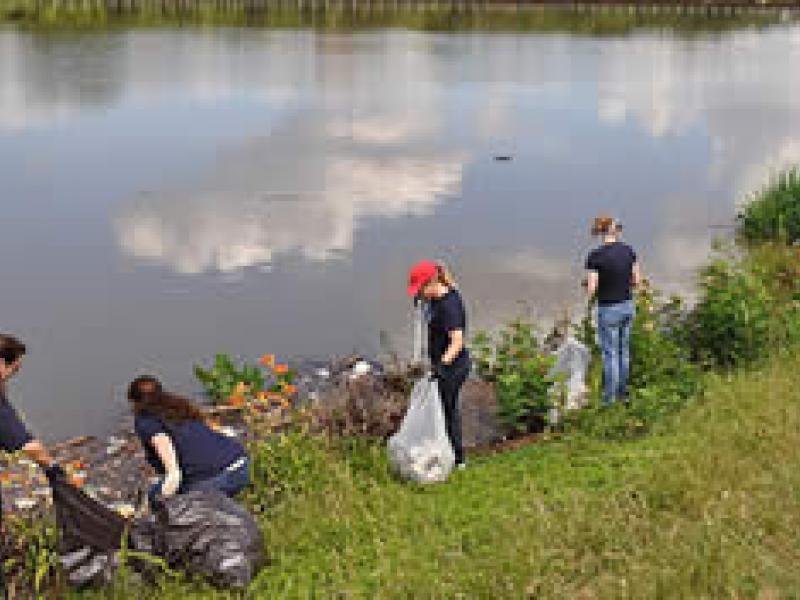The 2006 Social Capital Community Benchmark Survey is comprised of a national adult sample of 2,741 respondents and twenty-two communities sample (11 of which were from the 2000 Social Capital Benchmark Survey) totaling 9,359 community respondents. The overall sample size is 12,100.
Field Period
The survey was conducted during two waves. Wave 1:
| Location | Sample Size | SAMP variable value |
|---|---|---|
| Arkansas (Siloam Springs, Pine Bluff, Van Buren, and Little Rock) | 400 | 58 |
| Baton Rouge, LA | 400 | 3 |
| Duluth, MN/Superior, WI | 500 | 57 |
| Greensboro, NC | 450 | 31 |
| Houston, TX | 400 | 10 |
| Kalamazoo, MI | 500 | 12 |
| Lewiston-Auburn, ME | 500 | 56 |
| Rochester, NY | 700 | 44/45 |
| San Diego, CA | 501 | 15 |
| Winston-Salem, NC | 750 | 18 |
| Yakima, WA | 402 | 21 |
| National Sample | 1,951 | 51 (and callback field = wave1) |
| Total | 7,454 |
Wave 2 ran from April to August, 2006 and covered the following 8 communities: Kansas (samples in Kansas City, Junction City, Wichita, Garden City, Abilene, KS; rural sample; and urban sample in cities other than the above); New Hampshire (statewide with oversample in Cheshire county and I-93 corridor); Sarasota County, FL; and national sample.
| Location | Sample Size | SAMP variable value |
|---|---|---|
| Kansas | 2,455 | 59 |
| New Hampshire | 901 | 27,28,29 |
| Sarasota, FL | 500 | 53 |
| National Sample | 790 | 51 (and callback field = wave2) |
| Total | 4,646 |
Basic Survey Methodology
TNS Intersearch, an international survey firm, was commissioned to conduct the interviewing, prepare the data for analysis, and provide a “banner report" (detailed cross-tabulations). Interviews averaged 32 minutes in length and were conducted by telephone using random-digit-dialing by experienced interviewers.
| Sponsor | Area | Sample Size Goal Actual | |
|---|---|---|---|
| Arkansas (Siloam Springs, Pine Bluff, Van Buren, and Little Rock) with sample of roughly 100 in each of these towns | 400 | 400 | |
| East Baton Rouge Parish | 400 | 400 | |
| Duluth-Superior C.F. | Duluth (MN) and Superior (WI) | 500 | 500 |
| Greater Greensboro | Guilford County, | 450 | 450 |
| Greater Houston | Harris county | 400 | 400 |
| Kalamazoo C.F. | Kalamazoo County | 500 | 500 |
| Kansas Health Foundation | Kansas (statewide sample, and samples in Kansas City, Junction City, Wichita, Garden City, Abilene, KS) with sample of 350 in Junction City, 352 in Kansas City, 350 in Garden City, 350 in Abilene; 350 in Wichita; 351 rural; and 352 urban outside of the above communities. | 2,450 | 2,455 |
| Maine C.F. | Cities/Towns: Lewiston, Auburn, Greene, Sabattus, Lisbon, Mechanic Falls, Poland, Turner, Wales, Minot | 500 | 500 |
| New Hampshire C.F. | State of NH. (includes oversample of 200 in Cheshire County; 200 in I-93 corridor) | 900 | 901 |
| Rochester Area C.F. | Counties: Monroe, Wayne, Ontario, Livingston, Genesee, Orleans (includes oversample to achieve minimum of 100 Hispanics and 100 African Americans) | 700 | 700 |
| San Diego C.F. | San Diego County | 500 | 501 |
| Venice C.F. | Sarasota County | 500 | 500 |
| Winston-Salem | Forsyth County | 750 | 750 |
| Yakima | Yakima County | 400 | 402 |
Download Documentation & Data
Members may download the data and documentation directly using RoperExpress, non-members are required to register for free access to the data. Download Help Download Documentation Only - 2006 Codebook PDF (1,012KB) Download Documentation & Data (requires free registration) - Social Capital Community Survey, 2006
Download HelpTo Download the Documentation Only, click the "Codebook" link. When the codebook PDF opens in your browser window, select "File" and "Save As" to save a copy to your local computer.To Download the Documentation & Data, click the "Social Capital Community Survey" link. Review the Terms and Conditions and provide the registration information. Click the submit button and save the zip file to your local computer.
If you encounter any problems, please contact The Center at 607.255.8129 or by emailing Data Services.
Restricted Dataset
There is no restricted dataset.
Acknowledgements
This survey was funded thanks to the generosity of the Surdna Foundation, the Audrey and Bernard Rapoport Foundation, the Kansas Health Institute and the following community foundations: the Community Foundation for Greater Greensboro; the Duluth Area Foundation, the Gulf Coast Community Foundation of Venice; the Kalamazoo Foundation; the Maine Community Foundation; the New Hampshire Charitable Foundation; the San Diego Foundation; and the Winston-Salem Foundation.
